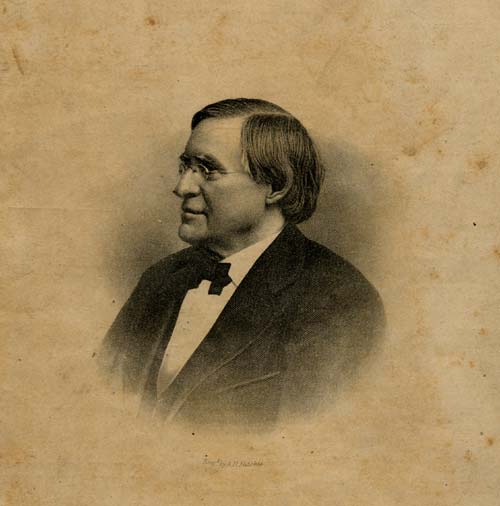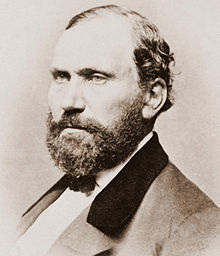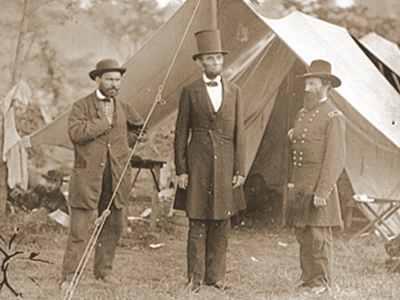The Baltimore Plot
The Baltimore Plot

In 1861 Lincoln dodged his first assassination attempt before even being inaugurated as president. Due primarily to the actions of S. M. Felton and Mr. Pinkerton the president elect's life was saved. The plot and actions taken make an amazing story of espionage and intrigue.
It began when Mr. Felton, superintendent of the Philadelphia, Wilmington, and Baltimore railway, received a visit from a Southern Bell. Like a scene straight from a noire novel Felton told of how Miss Dix walked into his office. She was a well connected philanthropist, working with hospitals for many years. Miss Dix spoke with Felton for over a hour detailing a plot to seize Washington and assassinate Lincoln on the way to his inauguration.
Upon hearing this news Felton sent an agent along his railway to Washington to speak with General Scott and inform him of the imminent peril. The General, however, lacked the political influence necessary, and his words went unheeded. During this time further plot became unveiled by a gentleman who said he wished to remain anonymous, but supplied Felton with inside information on several occasions. Men from Baltimore had disguised themselves as railroad workers and planned to burn down bridges just ahead of the President, attack his train, and kill him. 
Felton himself then journeyed to Washington and spoke to Marshal Kane, the chief of police, about the plot. Kane ascertained than there was no basis for the theory of burning the bridges and cutting off Washington, and dismissed it. Felton said, "Kane's manner of treating the subject, satisfied me that he was not reliable. I then determined to have nothing more to do with him, but investigate the matter in my own way, and at once sent for celebrated detective, Allan Pinkerton".
Pinkerton was appointed as the first detective in Chicago in 1849. He developed an impressive reputation for his services and this would not be the first time Felton had hired Pinkerton. Armed with only basic information about the plot, and eight volunteers, Pinkerton set about infiltrating the saboteur groups. It was thus discovered that out of three such organizations one was loyal to the Union but the other two did indeed plan to destroy the bridges and march on Washington. Felton sprung into action, hiring some 200 men, arming them, then sending them under the guise of whitewashing the bridges. In reality the paint was laced with salt and alum. After six to seven coats of this paint the bridges became virtually fireproof.
The schedule of Mr. Lincoln changed, however, sending him to Harrisburg from Philadelphia, through Baltimore, and to Washington. As the President's plans changed so did the conspirators plot. Felton met Pinkerton in Philadelphia where the detective had registered under a false name. They devised a plan to secretly take Lincoln on a train to Washington two days before schedule. The men attempted to contact Mr. Judd, a "intimate friend" of Lincoln's and through him inform the President. Three attempts to contact Mr. Judd during Lincoln's procession through the streets were deterred by police. Finally one of the detectives working for Pinkerton succeeded, bringing Mr. Judd to the hotel where he was informed of the assassination plot and the plan to thwart it.
Judd spoke to Lincoln, urging him to follow Felton's and Pinkerton's advice. The President would not be deterred from his speaking arrangements in Harrisburg the next day but said after he had fulfilled that engagement he would follow any advice the men had to give. After Lincoln's speech the telegraph lines out of Harrisburg were cut to prevent any communication of the President's whereabouts. Lincoln could not make the regular train that left at 11 pm and Felton feared sending him by a separate locomotive as it would arouse suspicion. So it was that Felton devised a clever plan, telling the train that an urgent package from the President needed to be delivered to Washington by the following morning, delaying the 11 pm train to transport it. Lincoln boarded the train with Pinkerton and a Mr. Kennedy as his escorts. The conductor remarked, "Well, old fellow, it is lucky for you that our President detained the train to send a package by it, or you would have been left" being unaware he was addressing Lincoln himself.
The train arrived safely in Washington and one of the agents telegraphed "Your package has arrived safely and been delivered"- WILLIAM. "Thus began and ended a chapter in the history of the Rebellion that has never been before written, " narrated Felton. "Mr. Lincoln was safely inaugurated, after which I discharged our detective fore, and also the semi- military whitewashers, and all was quiet and serene again on the railroad."
 A. Siepel
A. Siepel
source: Pictoral History of the Civil War in the Unites States of America Volume III by Benson J. Lossing
Pictures from top to bottom: S. M. Felton, Allan Pinkerton, Pinkerton and Lincoln


